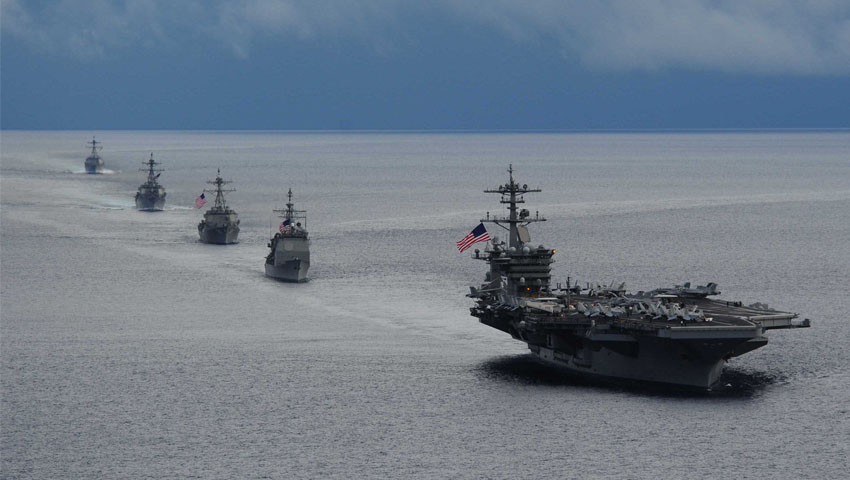Admiral John Aquilino, Commander of the US Pacific Fleet has responded to Chinese provocations following the targeted laser attack on a US Navy P-8 Poseidon by a Chinese destroyer in international waters off Guam.
To continue reading the rest of this article, please log in.
Create free account to get unlimited news articles and more!
A US Navy P-8A Poseidon maritime patrol aircraft was lased by People’s Republic of China (PRC) navy destroyer 161 on 17 February while flying in airspace above international waters approximately 380 miles west of Guam.
The P-8A was operating in international airspace in accordance with international rules and regulations. The PRC navy destroyer’s actions were unsafe and unprofessional.
Additionally, these acts violate the Code for Unplanned Encounters at Sea (CUES), a multilateral agreement reached at the 2014 Western Pacific Naval Symposium to reduce the chance of an incident at sea. CUES specifically addresses the use of lasers that could cause harm to personnel or damage to equipment.
The destroyer’s actions were also inconsistent with a Memorandum of Understanding (MOU) between US Department of Defense and the Ministry of National Defense of the PRC regarding rules of behaviour for safety of air and maritime encounters.
The laser, which was not visible to the naked eye, was captured by a sensor onboard the P-8A. Weapons-grade lasers could potentially cause serious harm to aircrew and mariners, as well as ship and aircraft systems.
The P-8A is assigned to VP-45, based out of Jacksonville, Florida, and is forward-deployed to Kadena Air Force Base in Okinawa, Japan. The squadron conducts routine operations, maritime patrol and reconnaissance in the US 7th Fleet area of operations.
"US Navy aircraft routinely fly in the Philippine Sea and have done so for many years – US Navy aircraft and ships will continue to fly, sail and operate anywhere international law allows," ADM Aquilino's statement said.
The US 7th Fleet is the largest numbered fleet in the world, and with the help of 35 other maritime-nation allies and partners, the US Navy has operated in the Indo-Pacific region for more than a century, providing credible, ready forces to help preserve peace and prevent conflict.
This incident follows similar confrontations between Chinese fishermen and the Royal Australian Navy's flagship, HMAS Canberra during a recent transit as part of Indo-Pacific Endeavour 2019 (IPE '19).

 Login
Login







